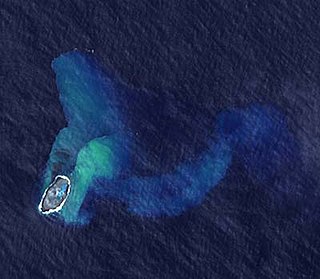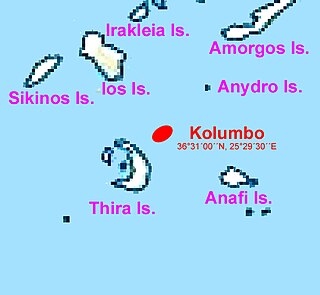 W
WBanua Wuhu is a submarine volcano that rises more than 400 m (1,300 ft) from the sea floor in the Sangihe Islands of Indonesia. Historical records show that several ephemeral islands were formed and disappeared. A 90 m high island was formed in 1835, but then dwindled to only a few rocks in 1848. A new island was reportedly formed in 1889 and it was 50 m high in 1894. Another new island was formed in 1919 but then disappeared by 1935.
 W
WCalais is a city and major ferry port in northern France in the department of Pas-de-Calais, of which it is a sub-prefecture. Although Calais is by far the largest city in Pas-de-Calais, the department's prefecture is its third-largest city of Arras. The population of the city proper is 73,911, and that of the urban area is 128,931 (2017). Calais overlooks the Strait of Dover, the narrowest point in the English Channel, which is only 34 km (21 mi) wide here, and is the closest French town to England. The White Cliffs of Dover can easily be seen on a clear day from Calais. Calais is a major port for ferries between France and England, and since 1994, the Channel Tunnel has linked nearby Coquelles to Folkestone by rail.
 W
WDom João de Castro Bank is a large submarine volcano located in the central north Atlantic Ocean, between the islands of São Miguel and Terceira in the archipelago of the Azores.
 W
WFukutoku-Okanoba (福徳岡ノ場) is a submarine volcano that is part of the Volcano Islands in the Bonin Islands of Japan. It is located 5 kilometers northeast of the island of South Iwo Jima.
 W
WGraham Island was an island created by a now fully submerged volcano in the Mediterranean Sea. It was discovered when it last appeared on 1 August 1831 by Humphrey Fleming Senhouse, the captain of the first rate Royal Navy ship of the line St Vincent and named after Sir James Graham, the First Lord of the Admiralty. It was claimed by the United Kingdom. It forms part of the underwater volcano Empedocles, 30 km (19 mi) south of Sicily, and which is one of a number of submarine volcanoes known as the Campi Flegrei del Mar di Sicilia. Seamount eruptions have raised it above sea level several times before erosion submerged it again.
 W
WHome Reef is an ephemeral island built by a submarine volcano whose top has repeatedly broken the surface and afterwards was eroded away by wave action. It is in the South Pacific, south of Late Island and southwest of Vava'u along the Tofua volcanic arc in Tonga.
 W
WHunga Tonga-Hunga Haʻapai is a volcanic island located about 30 kilometres south-southeast of Fonuafoʻou island in Tonga. The volcano is part of the highly active Tonga-Kermadec Islands volcanic arc, a subduction zone extending from New Zealand north-northeast to Fiji. It lies about 100 kilometres (62 mi) above a very active seismic zone. The island arc is formed at the convergent boundary where the Pacific Plate subducts under the Indo-Australian Plate.
 W
WJólnir was formerly a volcanic island south of Iceland. It was a former vent of Surtsey, along with Syrtlingur and Surtla. It emerged from the ocean as a result of active plate tectonics between December, 1965 and July, 1966. Oceanic erosion cyclically wore down the new lava as it formed, and the island sank below the surface several times.
 W
WKavachi is one of the most active submarine volcanoes in the south-west Pacific Ocean. Located south of Vangunu Island in the Solomon Islands, it is named after a sea god of the New Georgia Group islanders, and is also referred to locally as Rejo te Kavachi. The volcano has become emergent and then been eroded back into the sea at least eight times since its first recorded eruption in 1939.
 W
WKolumbo is an active submarine volcano in the Aegean Sea, about 8 km northeast of Cape Kolumbo, Santorini island. The largest of a line of about twenty submarine volcanic cones extending to the northeast from Santorini, it is about 3 km in diameter with a crater 1.5 km across. It was "discovered" when it breached the sea surface in 1649-50, but its explosion was not to be compared to the well-known Thera explosion and caldera collapse, currently dated ca. 1630 BCE, with its devastating consequences for Minoan civilization. The Smithsonian Institution's Global Volcanism Program treats it as part of the Santorini volcano.
 W
WKuwae is a submarine caldera between the Epi and Tongoa islands in Vanuatu. Kuwae Caldera cuts through the flank of the Tavani Ruru volcano on Epi and the northwestern end of Tongoa.
 W
WMyōjin-shō (明神礁) is a submarine volcano located about 450 kilometers south of Tokyo on the Izu-Ogasawara Ridge in the Izu Islands. Volcanic activity has been detected there since 1869. Since then it has undergone more eruptions, the most powerful of which resulted in the appearance and disappearance of a small island.
 W
WNishi-no-shima is a volcanic island located around 940 km (584 mi) south-southeast of Tokyo, that is part of the Volcano Islands arc.
 W
WOeno Island or Holiday Island is a coral atoll in the South Pacific Ocean, part of the Pitcairn Islands overseas territory.
 W
WSabrina Island was an islet formed during the months of June and July 1811 by a submarine volcanic eruption off the coast of Ponta da Ferraria, São Miguel Island, Azores. The first person to land on the island was Commander James Tillard, captain of the British warship HMS Sabrina, who hoisted the Union Jack on the island and claimed sovereignty for Great Britain. A diplomatic row with Portugal over the issue ensued, which the island's sinking back into the sea rendered moot.
 W
WShelly Island was a sandy island which began forming around April 2017, as a sandbank in the Outer Banks of North Carolina. Located off the tip of Cape Point in Buxton, North Carolina, the island was greatly reduced by the passage of Hurricane Maria. At its greatest extent, the crescent-shaped island measured around one mile long and more than 500 ft (150 m) wide. It was nicknamed Shelly Island by locals because of the vast quantities of shells that were found on the shore. By early 2018, the island had disappeared.
 W
WZalzala Koh or Zalzala Jazeera was a small island off the coast of the port city of Gwadar, Balochistan, Pakistan which appeared on 24 September 2013 following an earthquake. As predicted by many geologists, the island soon started to resubmerge, with satellite images indicating the island had sunk 3 m (10 ft) into the sea one month after its initial appearance. By the end of 2016, the island had completely disappeared.